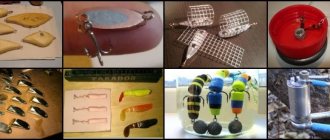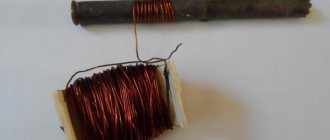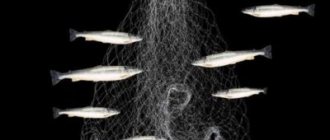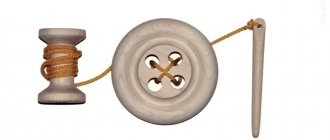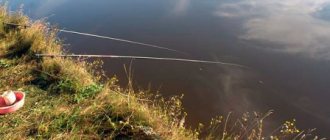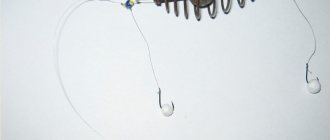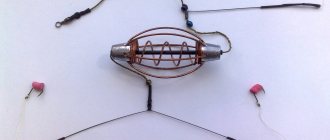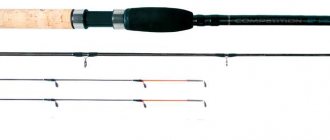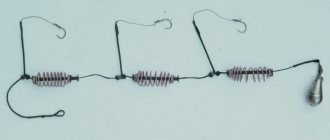Beginning fishermen sometimes do not know how to attach a feeder to a feeder correctly, and form equipment like on donks. However, in feeder fishing there are many different types of rigs, each of which performs better under certain fishing conditions. This is the advantage of feeder gear - it is a thin tool that can be adjusted to suit different fishing conditions. Cormac in installations is attached to the equipment in various ways. In this article we will look at how to assemble a feeder with a feeder in various installation schemes for this effective bottom gear.
Feeder in feeder installations
A feeder is not just a rod with a flexible signaling tip. The concept is broader - it is a different tactic and technique, different from conventional bottom fishing. If you use a feeder rod as a donk, throw it anywhere and forget it before the bite, the main meaning of this fishing method is lost. The main thing in the feeder is a thorough search for a promising point and its constant feeding. Rigging and its variants are the tools to implement this tactic. Article about feeder fishing:
At first glance, the structure of the feeder feeder is simple - a net and a sinker. However, there are many nuances hidden in this simplicity. Cages vary in weight, feed capacity, shape, and rate of feed leaching. The feeder must have a whole range of different feeders, used depending on the fishing conditions, the reservoir and the type of fish. More details - feeders for feeder equipment. You can attach a feeder feeder in a dozen different ways. It all depends on the chosen scheme of feeder equipment with a feeder.
- Paternoster and Gardner's loop;
- Helicopter;
- Symmetrical or asymmetrical loop;
- Flat method;
- Running with and without retraction;
- Carp rigs with or without a clip.
Even in some identical installations, you can tie the feeder feeder in different ways. Sometimes the fastening method is chosen for tactical reasons, in some cases - at the request of the fisherman, if the technical side is not important.
How to properly assemble feeder tackle. Schemes and drawings
In this article, we will analyze everything about how to properly assemble feeder gear and give recommendations on setting it up and even fishing.
Let's look at the components of the feeder gear. Any feeder tackle includes:
First, you need to decide on the main fishing spot for this type of gear. After all, there is no universal model that would be suitable for a reservoir with standing water and a river with a current. It is best to choose a fishing rod for feeder equipment under the supervision of a specialist or an experienced fisherman. Since it will not be easy for a beginner to cope with this task.
There is a pattern. For fishing in strong currents and when making long casts, it is worth choosing a rod with a large test load. For example, the classes medium-heavy, heavy and extra-heavy.
If we talk about the cost of a feeder rod, it can be different. It all depends on your financial capabilities and the number of fishing trips per year. After all, you must admit that there is no need to purchase an expensive feeder if it is constantly collecting dust in your pantry. If you love fishing and try to pay a lot of attention to this hobby, you need a professional feeder rod.
When choosing a rod, take a good look at each of its legs. The guide rings deserve special attention, more precisely, their smoothness, the thickness of the form and, of course, the comfort of the handle. If you don't like something about the rod, ask for it to be replaced. If the external inspection is over, positively assemble the feeder and shake it in your hands.
Attachment point
All feeders can be divided into two classes - with a standard fastening method and inline, with a through channel for passing fishing line. In classic fishing, ordinary cages are used; in method fishing, inline feeders are used. These are petal method forms, flat, inline cells, banjo and sticks for pellets (scoops). In inline designs, the fishing line is passed through a channel through the body, and in the classic version, the cormak is tied to it through a separate attachment point - a bracket, eyelet or side outlet. You can also attach the feeder to the feeder in the standard way in several ways - with loops, knots, or through a swivel with a carabiner.
In the sliding version, standard cages are attached to a fishing line in running mounts, as well as symmetrical or asymmetrical loops. The line is passed through the eye of the swivel or the bead of the outlet, and the cormak runs freely along it. Let's take a closer look at the nuances of attaching the feeder feeder in various installations. What equipment to use in certain fishing conditions is a separate article:
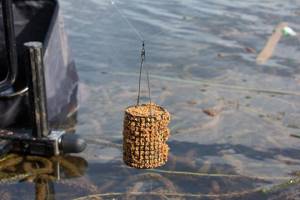
Soft tap
Some feeder cages are equipped with a soft outlet made of thick fishing line or fluorocarbon; sometimes there are designs with a plastic rocker for fastening. Such equipment allows you to make longer and more accurate casts, since the attachment point is located on the central axis. You can equip the feeder feeder with a soft outlet yourself. To do this, we simply tie a piece of fluorocarbon about 6-1 mm in diameter to the mesh, first passing it through a swivel to connect it to the main equipment.
When using fluorocarbon, it is better to install the feeder feeder mount on a soft outlet using crimp tubes. This material is hard and difficult to tie, especially in thick diameters. Fluorocarbon is less susceptible to external damage and wear-resistant, so it is better to use this material for soft drainage. The length of the outlet should not be made too short - otherwise it will be inconvenient to fill the net with food. You can equip any classic feeder feeders and bullets with a soft outlet.
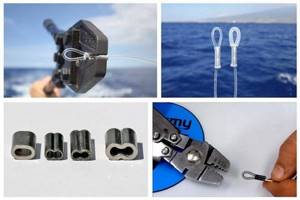
Blind mount
You can tie the feeder feeder with a blind knot in paternoster, Gardner loop, and helicopter installations. In all these rigs, the feeder is located at the bottom of the rig, and the leash on the outlet is located higher on the main line. The Gardner loop is the same paternoster, just a double bend, not a single one.
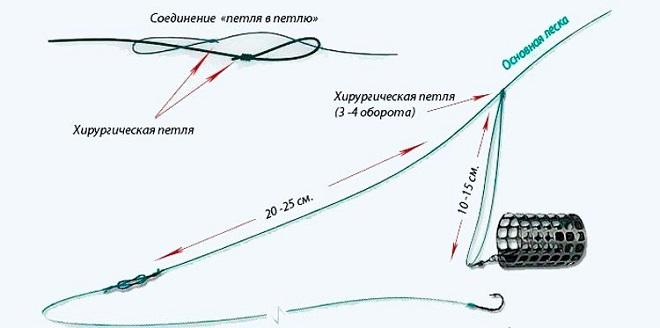
Noose
The most common method of binding using a blind method is a noose with a loop in a loop. This can be done either through a swivel or without it directly into the eyelet for attaching the cormak. At the end of the fishing line, a loop is formed for the feeder feeder (it is already equipped with a Gardner loop initially) of such a size that the cage can pass through it. This can be done using a figure eight knot or surgically (regular double or triple knot). We pull the loop into the eye of the swivel, then we thread the cormak into it and tighten it. When tightening, we place the overlap of the loop on the body of the swivel, and not on the main fishing line - this will make it easier to remove the cormak if replacement is necessary. A similar installation can be used in a feeder without a feeder - with a regular sinker with an eye. Article about paternoster equipment:
Into the loop
You can tightly tie the feeder feeder into a loop. When forming a loop, the fishing line can be immediately passed through the eye of a swivel or feeder. Then, when tying the loop, the cage will already be fixed in it. The disadvantage of this method is that it is not possible to quickly change the cormak; you will have to bandage the entire installation. This method is suitable for home reservoirs and well-known fishing spots, when the mass and size of the feed is precisely known. And you won’t have to change it during the fishing process. This method is also suitable for feeder helicopter or paternoster. Accordingly, in the Gardner loop, cormak is passed into the loop when tying the equipment initially.

Knot
You can simply tie the feeder net to the main line with a knot, using a paternoster or helicopter. Feeder feeder assembly - any, as for hooks. You can use a regular fishing self-tightening loop, clinch, palomar and other strong knots. However, the disadvantage is the same - the inability to replace without dressing. Therefore, the most popular way is through a carabiner clasp.
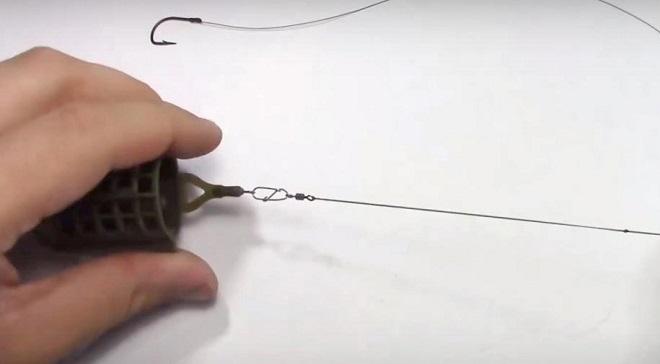
Swivel with clasp
The easiest way to properly tie a feeder feeder is through a two-piece carabiner plus a swivel. We tie the bundle with the clasp to the outlet in any way - with a knot, a noose, or in a loop through a swivel. Cormac is attached with a carabiner. If you tie the feeder feeder in this way, it can be easily removed and rearranged if necessary. Some feeder feeders are already equipped with a swivel. If you put a two-piece with a carabiner, you will end up with an overly cumbersome bunch of two swivels and a clasp. The complete swivel on such models can simply be bitten off, except for plastic mesh options with a branch in which the swivels are tightly fixed. Or simply tie it with a noose, as in the first version of the blind fastening.

Fishing tackle
To fish for killer crucian carp, you need a powerful rod, because the assembled tackle is a bit heavy, and you have to cast it far. An inertia-free reel will help you cast the equipment to the selected point and calmly bring out the biting fish.
There are no special requirements for the rod and reel; they must ensure comfortable fishing. There are situations when, with a good bite, two or even three fish are on the hooks at once and the rod must withstand such a load and help the angler bring trophies into the landing net.
Zakidushka
Despite the fact that the bait with a feeder is considered by some to be an outdated tackle, in fact it works great with spring rigs for small fish. The bait is cast and reeled in manually, and it is very difficult to fish out a large trophy in this way; you need a thick and strong fishing line. But a thick fishing line will scare away trophy fish, so they catch goby, crucian carp or bream with bait, which are abundant in our reservoirs, and they do not grow to gigantic sizes, like carp or cupid. For catch fishing, use a standard tackle with a spring and two hooks on top and bottom. The baits and baits are the same as when catching crucian carp on a spring bottom.
Spring for carp
They also catch carp, the king of our reservoirs, both cultivated and wild, using spring tackle. This fish also feeds in the bottom layer and looks for tasty treats in the most inaccessible places. At the same time, the carp is more careful, and when it finds a spring with bait, it will not immediately attack the treat, as the same crucian carp would do.
Therefore, when you see cautious bites or hear single “peaks” of the signaling device, there is no need to rush to hook the fish; let it take the bait after all. In order to deceive the carp and dull its caution, hooks with nozzles are stuck directly into the spring with bait, but on the same side as with the ring.
Thus, the hooks will not dangle next to the feeder and will not alert the fish, and when it begins to wash the bait out of the spring, the hooks are released, fall into the fish’s mouth and catch it. The bait should be floating, then it will quickly fall into the fish’s mouth and it will not even have a chance to free itself from the hook.
Sliding options
In a symmetrical or asymmetrical loop, you need to install the feeder feeder so that it runs freely along one of the arms of the bundle. When biting, the fish pulls the line through the eye until it reaches the top knot. After this, self-notching occurs. When tying, the fishing line is simply passed through the eye or bundles with a clasp, to which the cage is then attached. The result is a sliding equipment limited by two nodes. Read more about installation of an asymmetrical loop in the feeder.
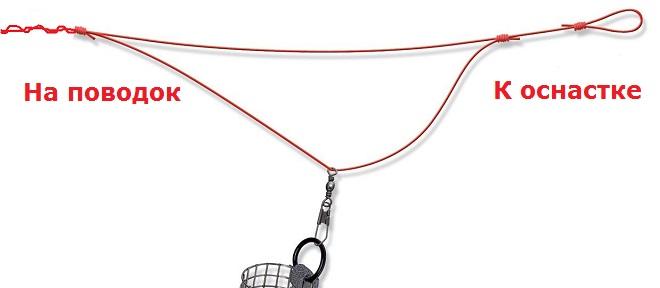
Asymmetrical loop
Running
A similar principle for equipping a feeder feeder is used in the installation of the Running Feeder. The fishing line is also passed into a ring or bead of the outlet (running with outlet). At the bottom, the cage is limited by a knot twisting onto a leash. Sliding can also be limited from above with a silicone stopper. This is a fully running rig (if there is no upper stopper), self-hooking does not occur, so constant monitoring of the rig is required.
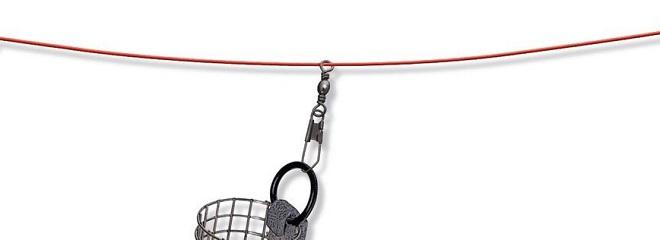
A similar principle works when equipping a feeder with an anti-twist. In this case, instead of twisting, a plastic tube is used, which prevents the leash from overlapping when casting. The entire tube runs freely along the fishing line along with the cage, resting against the swivel assembly at the end, to which the leash is attached on the other side. Accordingly, the mesh is attached to the tube via a carabiner.

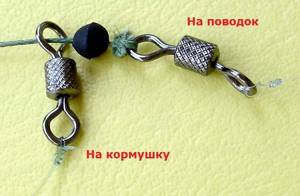
Running on swivels
How to tie a feeder to a feeder
Unlike casting feeder fishing, feeder fishing is distinguished by particularly sensitive and, accordingly, more complex equipment, which includes not only feeding devices and leashes with attachments, but also all kinds of rocker arms and an element such as an anti-twist, which can prevent tangling of rigs in the process of casting and playing fish. Also, to form the connections that make up the installations, it is necessary to use all kinds of combinations of ties from scaffolding material, the main design of which is a variety of nodes and loops. Further, in the course of the material, we will dwell on the basic technologies that allow you to tie a feeder to a feeder.
Paternoster
Paternoster is the simplest and most common type of mounting connection, which can be safely classified as a universal option applicable for most fishing conditions. The technique is based on branching the main cord at the end of the equipment into a short branch, to which a feeding device is attached using a carabiner fastener or simple tying. On the continuation of the cord, a leash is mounted in a loop in a loop or using a miniature metal fastener.
Important! To prevent tangling of the equipment, the length of the leash is always an order of magnitude higher than the length of the outlet.
The outlet on the main cord is formed by twisting the fishing line and fixing it with a knot, or for mobility of use and speed of production, instead of tying a knot, a triple swivel or paired carabiners are installed. The advantages of this knitting technique are the speed and simplicity of the design. The disadvantages of this method are low sensitivity to small bites, especially when using equipment in reservoirs with medium and fast currents.
Gardner's loop
The Gardner loop is an improved type of knitting of the paternoster presented above. The method was invented by an American fisherman, after whose name this method of feeder installation is called. Cunning anglers have been encouraged to move away from forming a cast-off and using a carabiner or directly tying the feeding device to the cast-off line.
Instead of a short branch, a blind loop is knitted, first into which a feeder can be attached to the fishing line through a swivel or subsequently using a winding ring. The leash with bait is attached to the cord without changes compared to the paternoster, through a loop or carabiner. As a result of the innovative approach, tying has become even more simplified without changing its initial functionality, and its formation does not take the fisherman even a few seconds of time. These factors are the main advantages of the connection. The disadvantages are comparable to the paternoster and these are the relative roughness of the equipment and the insufficiently efficient operation of the installation on currents.
Symmetrical loop
You can tie the feeder to the fishing line in a more sensitive way using the principle of forming a symmetrical loop on the cord. Within the main cord, at a distance of 30–40 cm, a symmetrical loop is formed using two surgical knots along the edges of the structure. A feeding device is inserted into the loop, which should slide freely along one of the arms of the connected loop. In the upper part a carabiner is placed for fastening with the main fishing line; in the lower part, a 10 cm twist is made from the two sections remaining from forming the loop, to which the leash with a hook will be attached.
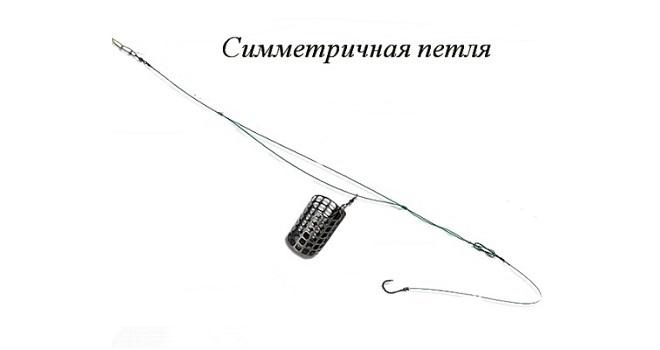
Important! Installation is considered a specialized method of equipment for feeder hunting in a body of standing water.
The advantages of knitting are high sensitivity. This parameter gives the sliding principle of operation of the feeding structure, the weight of which is not felt by the fish trying the bait. The disadvantages are the specificity of fishing conditions, depending on the type of reservoir and some of the difficulties when tying a loop construct.
Asymmetrical loop
You can also tie the feeder to the feeder using the antipode of the previous connection option - an asymmetrical loop. The absolutely similar principle of forming the main knitting design differs only in the size of the loop arm.
Important! One of the arms of the loop is made two or three centimeters shorter than the second, and it is on this short part of the mounting connection that the feeding tool is placed again, using the sliding principle.
Fishermen recommend the presented tying especially for fishing on currents, because the advantages of the rig are the ability to clearly transmit even the slightest bite to the quivertip, and the disadvantage is only the relative complexity of tying.
Flat method
There are two principles for tying a method-type feeder onto a fishing line, using sliding and blind connection technology. Using sliding technology or the so-called inline method, the device, due to its design features, is mounted on the main cord. The movement of the feeder is regulated by two stoppers. A leash with a hook is attached behind the feeding tool.
Using blind technology, we tie the feeder to the outlet from the main cord, which is similar to the paternoster technique, mounting the leash in the classic way behind the bait device. A more innovative method, the so-called helicopter and two knot type, places the leash on a sliding carabiner in front of a feeder mounted at the end of the cord. It is more effective to use open-type feeders in weakly flowing and stagnant waters, and the direction of how to tie the equipment, sliding is more sensitive in its principle, gives the activity of the fish.
Harvester equipment
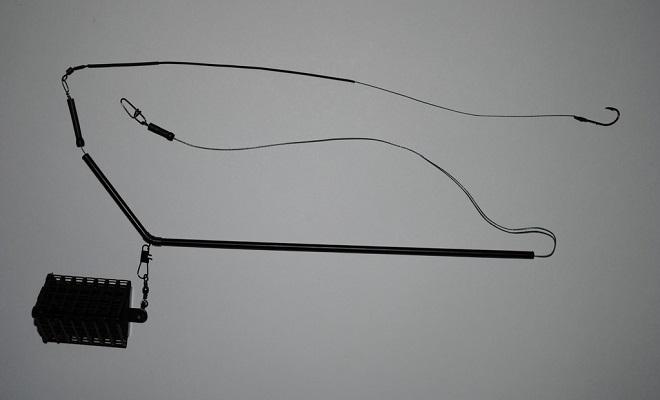
This type of equipment is equipped with anti-twist tubes, on the side of the long arm of which a leash is connected to the main line inserted through the cavity of the tube, and a feeding tool is attached to the break between the components of this element using a carabiner. Easy to assemble, recommended for novice feeders due to the low tangling of the gear and versatility of use. The disadvantage of this method is its roughness and low sensitivity when fishing for passive fish.
Blind and sliding installation for flat method
Feeders for method feeder fishing are attached to the fishing line by passing it through a through channel in the body of the structure using the inline principle. Standard method kormak, banjo, flat and scoop rigs are tied in this way. Typically, such feeders are supplied complete with a swivel, which is fixed in a special groove. With this method of tying, a blind rig is obtained, and the fish hooks itself. If you place a bead between the method feeder and the end swivel, there will be no fixation in the socket - you will end up with a sliding inline rig. Read more about flat equipment.
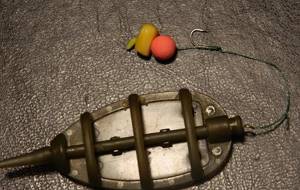
Deaf flat
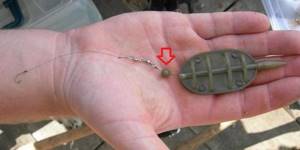
Sliding flat
